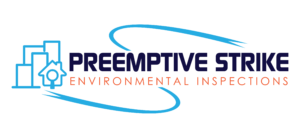Service Areas
Available for
Commercial and Residential
Asbestos
Asbestos is a naturally occurring mineral fiber that occurs in rock and soil. Because of its fiber strength and heat resistance asbestos has been used in a variety of building construction materials for insulation and as a fire retardant. Asbestos has also been used in a wide range of manufactured goods, mostly in building materials (roofing shingles, ceiling and floor tiles, paper products, and asbestos cement products), friction products (automobile clutch, brake, and transmission parts), heat-resistant fabrics, packaging, gaskets, and coatings.
Lead-Based Paint (LBP)
Lead paint or lead-based paint is paint containing lead.
If your home was built before 1978, there is a good chance it has lead-based paint. In 1978, the federal government banned consumer uses of lead-containing paint, but some states banned it even earlier. Lead from paint, including lead-contaminated dust, is one of the most common causes of lead poisoning.
Lead paint is still present in millions of homes, sometimes under layers of newer paint. If the paint is in good shape, the lead paint is usually not a problem. However, deteriorating lead-based paint (peeling, chipping, chalking, cracking, damaged, or damp) is a hazard and needs immediate attention.
Mold
Molds are types of fungi. They grow in the natural environment. Tiny particles of molds are found everywhere in indoor and outdoor air. In nature, molds help break down dead materials, and can be found growing on soil, foods, plants and other items. Molds are also very common in buildings and homes. Mold needs moisture to grow. Indoors, mold growth can be found where humidity levels are high, like basements and showers. Molds produce microscopic cells called "spores" that are spread easily through the air. Spores can also be spread by water and insects. Live spores act like seeds, forming new mold colonies when they find the right conditions.
Chinese Drywall
"Chinese drywall" refers to an environmental health issue involving defective drywall manufactured in China, imported to the United States and used in residential construction between 2001 and 2009 — affecting "an estimated 100,000 homes in more than 20 states."
Indoor Air Quality (IAQ)
Indoor Air Quality (IAQ) refers to the air quality within and around buildings and structures, especially as it relates to the health and comfort of building occupants. Understanding and controlling common pollutants indoors can help reduce your risk of indoor health concerns. Health effects from indoor air pollutants may be experienced soon after exposure or, possibly, years later.
Baseline Property Condition Assessment (PCA)
The Property Condition Assessment (PCA), sometimes referred to as a Property Condition Report (PCR), is designed to assess the physical condition of a property by conducting a limited walk-through survey in compliance with ASTM E2018-15 Standards Guide for Property Condition Assessments: Baseline Property Condition Assessment Process.
Phase I Environmental Site Assessment (ESA)
A Phase I ESA is a tool commonly used in evaluating the environmental liability associated with a real estate asset of any type. Whether the property is industrial, commercial, mixed-use, and multifamily.
Free Training Courses
Lunch & Learns & Custom Classes For Realtors, General Contractors, and more.
Class Course Topics May Include: Asbestos, Lead-Based Paint, Mold, IAQ, Radon, and Chinese Drywall as requested.

